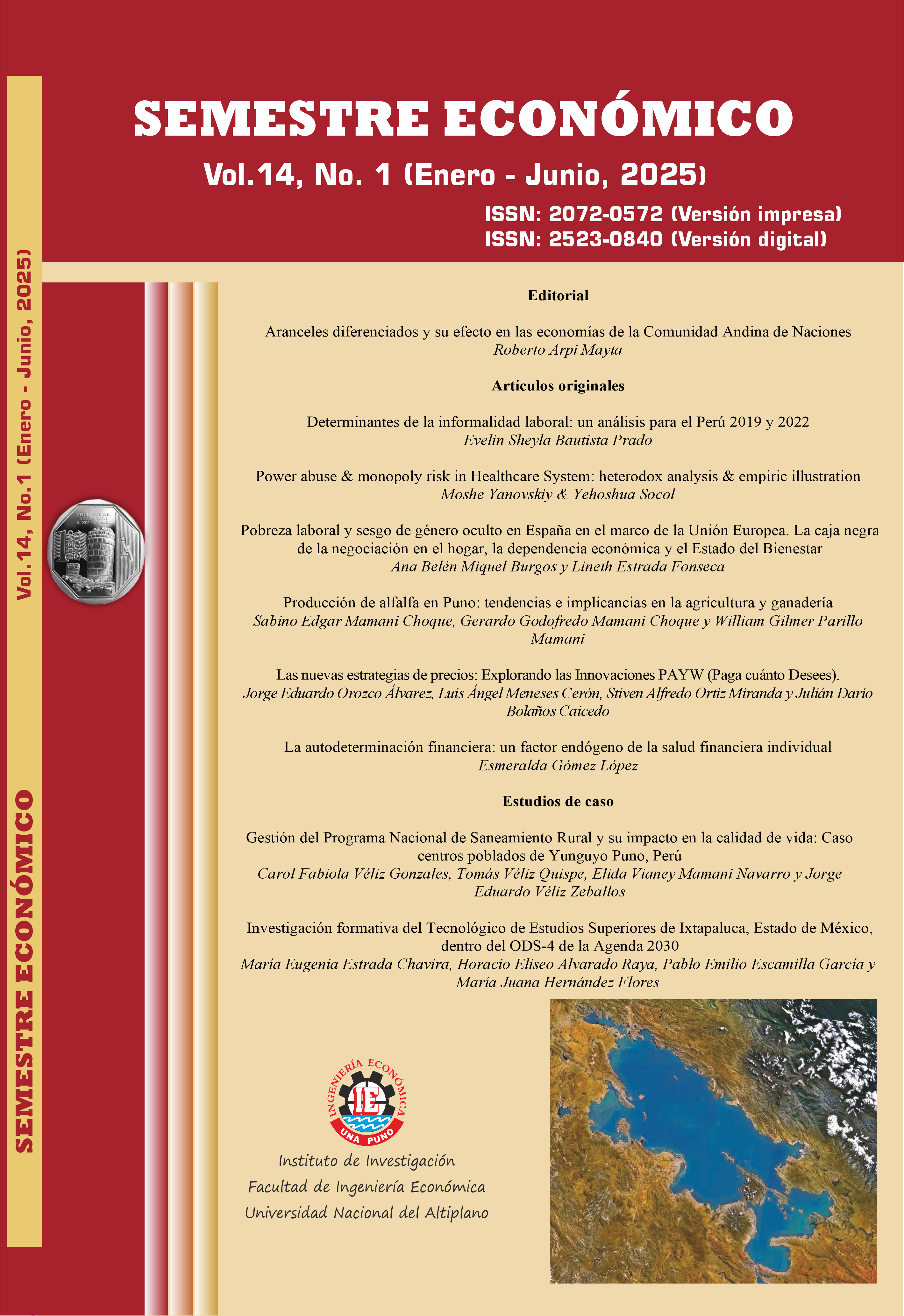New Pricing Strategies: Exploring PAYW (Pay as YouWish) Innovations
DOI:
https://doi.org/10.26867/se.2025.v14i1.182Keywords:
Pricing strategies, New approaches, PAYW innovations, Pay as YouWish, Exploring pricing dynamicsAbstract
This research article examines the impact and applicability of innovative pricing strategies in today’s market.
With a particular focus on PAYW (Pay How Much YouWant) Innovations, we explore how this pricing
model challenges traditional approaches. We investigated how the Pay As YouWant model is being adopted
by various companies in different sectors, evaluating its advantages and challenges. Also, it analyzes how
this strategy can influence the consumer’s perception of value and relationships with customers. Through
an in-depth analysis of pricing dynamics and relevant case studies in global companies, we seek to provide
a comprehensive understanding of the effectiveness and potential of PAYW Innovations in shaping future
business strategies. It was identified that the implementation of PAYW poses a strategic challenge for companies: how to empower customers while maintaining profitability over time.
Metrics
References
Akbari, K., & Wagner, U. (2022). Erratum on the Pay-as-You-Wish model by Chen et al. (2017). Mar-keting Science, 41(3), 657. https://doi.org/10.1287/mksc.2021.1319
Ariely, D., Gneezy, U., & Haruvy, E. (2005). The Effect of Relative Thinking on the Perceived Price of a Coat Check. Marketing Science, 24(1), 151-157.
Chen, et al. (2017). The Role of Money Illusion in Pay-What-You-Want Pricing. Journal of Marketing Research, 54(6), 931-945.
Chen, Z., & Liang, X. (2014). The performance of pay-as-you-wish pricing with relational and forward-l ooking customers. 11th International Conference on Service Systems and Service Management, 1-5. https://doi.org/10.1109/ICSSSM.2014.6943418
Groening, C., & Mills, P. (2017). A guide to pay-what-you-wish pricing from the consumer’s viewpoint. Business Horizons, 60(4), 441-445. https://doi.org/10.1016/j.bushor.2017.03.004
HBS, W. (2015). Pay What You Wish: What Happens When Customers Choose The Price. Forbes. https://www.forbes.com/sites/hbsworkingknowledge/2015/07/22/pay-whatever-you-want-when-retailers-let-customers-name-their-price/
Hou, H., Wu, F., & Kong, X. (2023). Optimal pricing strategy for content products under competition: Pay-as-you-want or fixed-price? Computers & Industrial Engineering, 181, 109298. https://doi.org/10.1016/j.cie.2023.109298
Just, N. (2018). Governing online platforms: Competition policy in times of platformization. Tele-communications Policy, 42(5), 386-394. https://doi.org/10.1016/j.telpol.2018.02.006
Kim, J. H., Natter, M., & Spann, M. (2009). Pay What You Want: A New Participative Pricing Mecha-nism. Journal of Marketing, 73(1), 44-58.
Kotler, P. y Armstrong, G. (2018). Principios de marketing (17.ª ed.). The University of Minnesota Li-braries Publishing.
https://open.lib.umn.edu/principlesmarketing/
Kotler, P., & Keller, K. L. (2016). Marketing Management (15th ed.). Pearson.
Lin, Q., & Lu, A. (2022). The magic of lottery: Investigating the PAYW in live streaming from oppor-tunism and impulsiveness. ICIS 2022 Proceedings, (10). https://aisel.aisnet.org/icis2022/digital_commerce/digital_commerce/10
Malhotra, N. K., Huang, M. H., & Mishra, A. (2005). The Relative Influence of Explanations on Con-sumers’ Willingness to Pay: A Comparison of Alternative Pay-What-You-Want Approaches. Journal of Consumer Research, 32(4), 567-575.
Malhotra, N. K., Huang, M. H., & Mishra, A. (2005). The Relative Influence of Explanations on Con-sumers’ Willingness to Pay: A Comparison of Alternative Pay-What-You-Want Approaches. Journal of Consumer Research, 32(4), 567-575.
Meneses Cerón, L. Ángel y Shirley Rueda, L. 2018. Diseño de un sistema piloto de costeo ABC como herramienta para la toma de decisiones en una empresa de servicios, el caso de la agencia Ecoturismo Putumayo. Apuntes Contables. 22 (nov. 2018), 101–122. https://doi.org/10.18601/16577175.n22.07
Meneses Cerón, L. Á., van Klyton, A., Rojas, A., & Muñoz, J. (2024). Climate Risk and Its Impact on the Cost of Capital—A Systematic Literature Review. Sustainability, 16(23), 10727. https://doi.org/10.3390/su162310727
Monroe, K.B. (2003) Pricing-Making Profitable Decisions. 3rd Edition, McGraw Hill/Irwin, New York.
Scheibehenne, B., & Sturm, N. (2015). Pay what you want, self-image and identity: Insights from an experiment on own- and other-image effects. Journal of Behavioral and Experimental Economics, 56, 1-8.
Williams, K. R. (2022). The welfare effects of dynamic pricing: Evidence from airline markets. Econ-ometrica, 90(3), 1265–1302. https://doi.org/10.3982/ECTA16180
Ziari, M., & Sajadieh, M. S. (2021). A behavior-based pricing model in retail systems considering ver-tical and horizontal competition. Computers & Industrial Engineering, 152, 107054. https://doi.org/10.1016/j.cie.2020.107054















